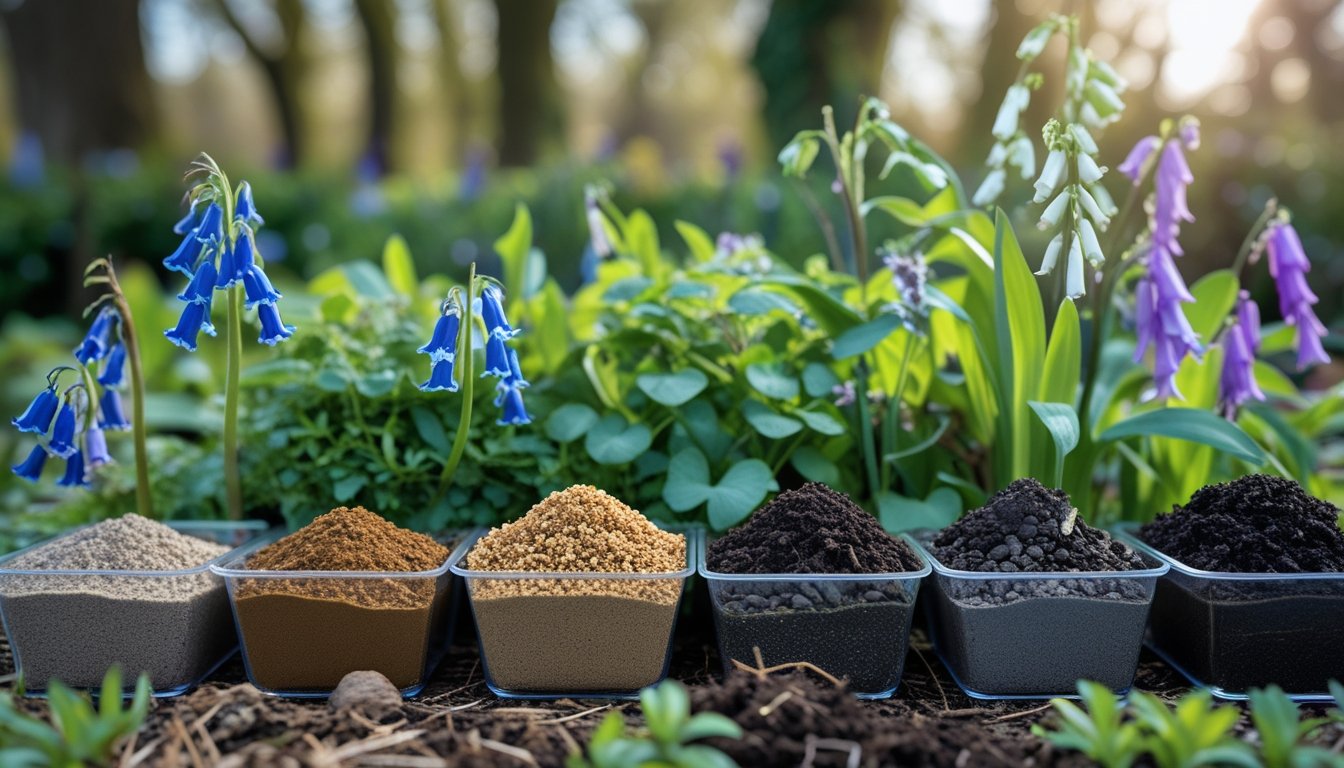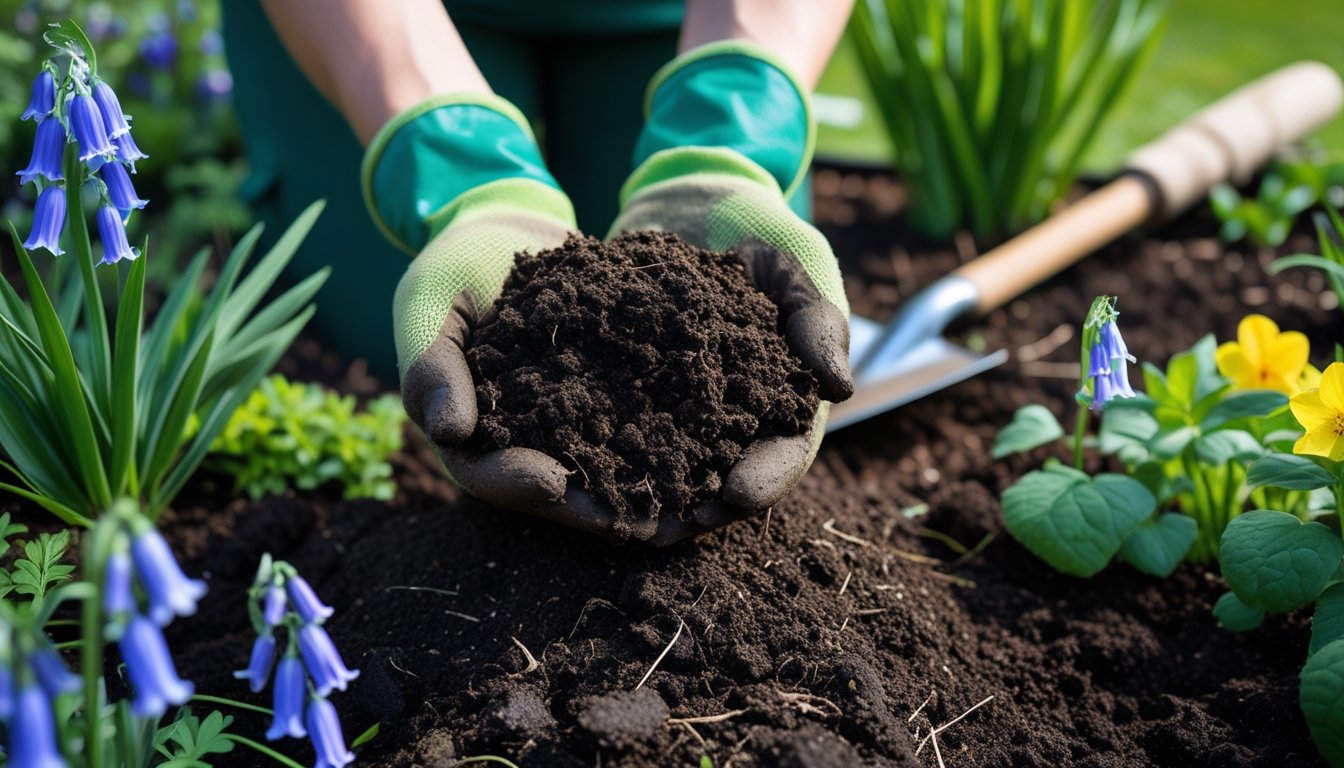Late updated: 28 Nov 2025 15:11
Written by: Emily Thornton
Choosing The Right Soil For UK Native Plant Gardens: A Comprehensive Guide
Gardening enthusiasts know the crucial role soil plays in the success of any planting endeavour. Choosing the right soil is key to thriving UK native plant gardens, ensuring native species flourish in their natural habitat. With various soil types across the United Kingdom, such as clay, sandy, chalky, and loamy, each type affects plant growth and maintenance differently. By understanding the distinct characteristics of these soils and how they interact with native plants, we can create a garden that's not only beautiful but also sustainable.

Native plants, adapted to specific regional conditions, can make gardening more rewarding and less labour-intensive. The soil we select will influence not just plant growth, but also biodiversity, supporting local wildlife and fostering an eco-friendly garden environment. Matching native plant species with their ideal soil type ensures they thrive with minimal intervention, making our gardens resilient and vibrant.
Preparing and improving our soil, too, plays a significant role in gardening success. Composting, mulching, and other soil enhancement techniques can transform less-than-ideal soil, allowing a wider array of native plants to flourish. Our efforts in this regard will be rewarded with a garden that is both pleasing to the eye and beneficial to the local ecosystem.
Key Takeaways
- Right soil choice is crucial for thriving native plant gardens
- Match soil types to native plant needs for lush growth
- Soil improvement enhances garden biodiversity and resilience
Matching Soil Types to UK Native Plant Gardens

Selecting the appropriate soil for UK native plant gardens plays a vital role in fostering robust growth and sustaining local biodiversity. We can maximise plant health by understanding soil types, pH levels, and choosing suitable native species. Let's explore these elements to create harmonious and thriving gardens.
Understanding Key Soil Types in the UK
In the UK, garden soils vary greatly, including clay, sandy, loamy, chalky, and peaty types. Clay soils are heavy with a high nutrient content but can become waterlogged, ideal for some moisture-loving plants. Sandy soils drain quickly and are suitable for drought-tolerant species. Loamy soils are a gardener’s dream; they balance drainage and nutrient retention effectively, supporting a variety of plants. Chalky soils are free-draining and alkaline, requiring plants that can tolerate lime. Peaty soils are acidic and rich in organic matter, perfect for acid-loving species. Each soil type presents unique challenges and opportunities for plant growth.
How Soil pH Influences Native Plant Choices
Soil pH is a critical factor in plant selection. A pH scale measures acidity and alkalinity, affecting nutrient availability. UK native plants like bluebells (Hyacinthoides non-scripta) thrive in neutral to acidic soils, while dog rose (Rosa canina) can adapt to a range of pH levels. Armeria maritima prefers well-drained, acidic soils. Alkaline, chalky soils support quercus robur (English oak). Our plant choices must align with the natural pH, ensuring optimal growth and reducing the need for soil amendments.
Examples of UK Native Plants Suited to Each Soil Type
Matching native plants to soil types enhances growth and resilience. In clay-rich gardens, foxglove (Digitalis purpurea) thrives due to its moisture-tolerant nature. Sandy soils are home to hardy species like Armeria maritima, which withstands dry conditions. Loamy environments support a range of flora, from native grasses to bluebells. Chalky grounds are perfect for the robust English oak. Peaty soils, often found in raised gardens, cater to acid-loving plants like the delicate bluebell. Choosing wisely ensures that our gardens remain healthy and low-maintenance.
Role of Soil Type in Wildlife and Cottage Gardens
Soil type significantly affects wildlife and cottage gardens. By selecting suitable UK native plants, we create habitats that attract pollinators and support biodiversity. For instance, butterfly-friendly foxglove thrives in clay soils, drawing bees and hummingbirds. Sandy soils suit drought-resistant species that attract bees and provide seed sources. Loamy soils accommodate widespread plant varieties, sustaining diverse wildlife. Chalky areas support robust trees like the English oak, providing shelter for birds. Crafting our gardens with ecological awareness enhances their beauty and environmental benefits.
Soil Preparation and Improvement for Thriving Native Species
Creating a successful native plant garden requires careful soil preparation and enhancement. From understanding the specific soil requirements of native species to implementing sustainable practices, this guide provides essential insights for achieving a flourishing environment for UK native plants.
Essential Steps for Effective Soil Preparation
The foundation of any thriving native plant garden is proper soil preparation. We need to begin by testing the soil to determine its pH and nutrient composition. This can be done using affordable soil testing kits or by sending samples to a local extension service. Once we have the test results, we can tailor our soil amendments accordingly.
It's crucial to clear the area of weeds and unwanted vegetation, as these can compete with native plants for nutrients and water. Incorporating organic matter like well-rotted manure or compost into the soil helps improve fertility and structure. This addition enriches the soil with necessary nutrients while enhancing the living environment for beneficial microorganisms, which play a vital role in plant health.
Improving Soil Structure and Fertility
Improving soil structure is about creating an environment where roots can grow freely and water can penetrate. Clay soils, common in some UK regions, may require hefty doses of organic matter to break up the dense particles. Sandy soils, on the other hand, benefit from adding materials that can increase water retention.
We recommend adding organic matter annually, as it breaks down over time. Well-rotted manure is often suggested due to its balanced nutrient profile. Using materials like green manure can also be effective, serving as a cover crop that’s turned into the soil to improve its quality. It's endorsed by the Royal Horticultural Society for its utility in enhancing soil structure and fertility naturally.
Managing Soil Compaction and Drainage
Compacted soil poses a challenge as it limits root growth and water movement. We need to alleviate compaction through aeration, which can be achieved by manually turning the soil or using tools such as a garden fork or mechanical aerator. This process ensures that air and nutrients reach the plant roots more efficiently.
Drainage is another critical element. Poorly drained soils can lead to waterlogged conditions, detrimental to many native species. Raised beds or incorporating materials like gravel or coarse sand can aid soil drainage. For areas prone to flooding, choosing drought-tolerant plants can avert water logging issues, ensuring that roots aren't oversaturated during wet periods.
Best Practices for Sustainable Soil Management
Sustainable soil management is key to maintaining a healthy garden over time. We should practice crop rotation in larger gardens to prevent nutrient depletion and to manage pests and diseases. Cover crops not only improve soil structure but also provide a living mulch that conserves moisture and suppresses weeds.
Avoiding excessive use of chemical fertilizers is crucial. Instead, adopt a balanced approach where natural amendments are the primary source of nutrients. Mulching with organic materials helps retain soil moisture and regulate temperature, crucial for consistent plant growth.
By focusing on these sustainable practices, we can nurture a self-sufficient ecosystem that supports a diverse array of native species, ensuring long-term success and environmental harmony.
Frequently Asked Questions

Selecting the appropriate soil is critical for cultivating UK native gardens. It's essential to understand regional soil characteristics and alteration methods to support native plant species.
What are the essential soil characteristics for thriving UK native gardens?
The essential soil characteristics for UK native gardens include good drainage, the right texture, and adequate nutrient content. Clay, sandy, chalky, or loamy soils each offer unique benefits for different native plants. Matching soil type with plant preferences helps us achieve better growth and garden sustainability.
How can one determine the most suitable soil type for specific UK native plants?
To determine the most suitable soil type, it's important to know your garden's existing soil conditions. Testing soil pH levels and texture can guide us in selecting compatible native plants. Different plants may thrive in clay, sandy, chalky, or loamy environments, so matching them appropriately ensures optimal growth.
What adjustments should be made to soil composition to support UK native biodiversity?
Adjustments like adding organic matter or adjusting pH levels can significantly boost soil composition. Incorporating compost enhances soil fertility, while lime or sulphur can be used to modify pH balance. Each amendment should be tailored based on the native species selected and their specific requirements.
Could you guide me on the best practices for preparing garden soil for UK native species?
Preparing garden soil involves removing existing vegetation, turning the soil, and enriching it with organic material. It's vital to eliminate competing plants and ensure the soil is loose and well-aerated. These steps help create an ideal growing environment for native plants and improve their establishment.
What advice can you offer on managing soil pH for a garden of UK indigenous plants?
Managing soil pH requires regular testing and appropriate amendments. Many UK natives prefer neutral to slightly acidic conditions. If soil is too acidic or alkaline, adding lime or sulphur can help reach desired pH levels. Understanding plant preferences aids in these adjustments, fostering healthier plant growth.
How often should soil quality be assessed and improved in UK native plant gardens?
Soil quality should be assessed biannually to ensure optimal growing conditions. Regular testing helps us track changes in pH and nutrient levels, allowing timely interventions. Improved soil amendments can be applied in early spring and late autumn, ensuring continuous plant support through seasonal changes.
